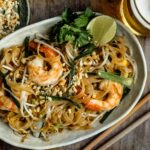Easy Authentic Pad Thai
This easy authentic Pad Thai recipe is incredibly quick to prepare and has a perfect balance of sweet, salty and sour flavors. Ready from start to finish in 30 minutes or less!
Servings: 2
Calories: 612kcal
Ingredients
- 6 oz dried flat rice noodles (¼ inch width)
- 2 large eggs
- 10 shrimp (fully thawed)
- 2 stalks green onion (cut into 2 inch length pieces)
- 1 shallot (or small onion, thinly sliced)
- ¼ cup garlic chives (Optional) cut into 2 inch length pieces (if you are using this, use only 1 green onion stalk)
- 1 cup bean sprouts (add ½ cup more if you like the fresh crisp from the sprouts)
Pad Thai Sauce
- 3 tablespoon fish sauce
- 3½ tablespoons sugar (or light brown sugar or palm sugar)
- 3½ tablespoons tamarind concentrate (or lime juice)
- 1 tablespoon oyster sauce
- ⅓ cup water
- 1 tablespoon oil
Garnish
- 1 tablespoon toasted peanuts (optional) (finely chopped or crushed)
- 2 lime wedges
Instructions
Soak the Rice Noodles
- In a large bowl, soak 6 oz dried flat rice noodles in hot tap water (not boiling water) for 15-18 minutes. Make sure all the noodles are fully submerged under water.This will soften them up and make them pliable, perfect for stir-frying later on. Once the noodles are soft, drain them and set them aside.
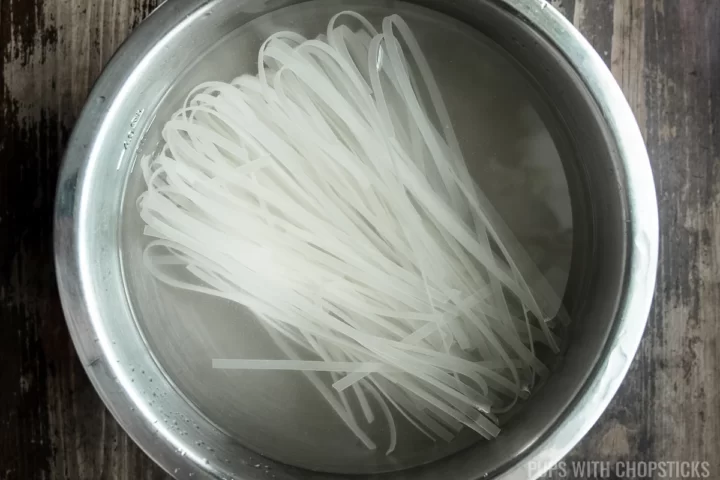
- To test if the noodles are at the right consistency, do a finger wrap test. Wrap a noodle around your finger, if it breaks - you need to soak it longer, if it wraps easily it's good to go.
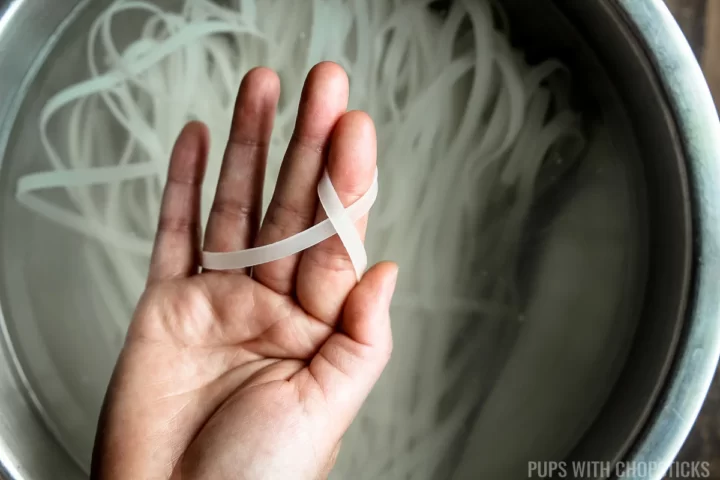
Prepare the Pad Thai Sauce
- In a small bowl, combine 3½ tablespoons sugar, 3 tablespoon fish sauce, 1 tablespoon oyster sauce, 3½ tablespoons tamarind concentrate, ⅓ cup water and mix well. Set it aside for later.
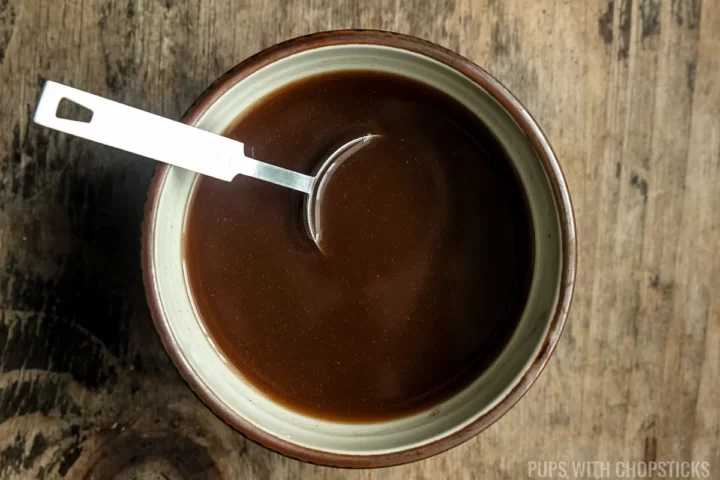
- (Optional) If you like your pad thai to be spicy, you can add a tablespoon of sriracha.
Prepare the Herbs, Aromatics and Veggies
- Peel the garlic and chop it into small pieces. Then, peel the shallots and slice them thinly. Set them both aside for later.
- Cut the green onions and garlic chives (if you are using any), into 2 inch pieces. Cut the white parts of the green onion in half lengthwise as well.
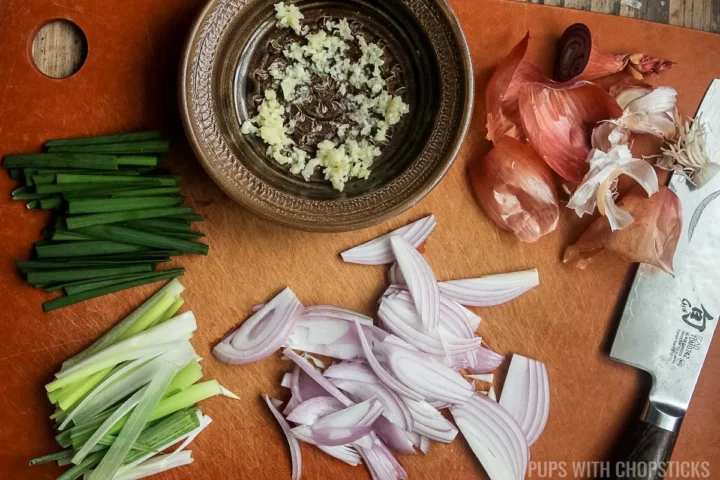
- In a large bowl add cold water and the bean sprouts and rinse it until the water runs clear. Remove any soggy brown bean sprouts and discard them.
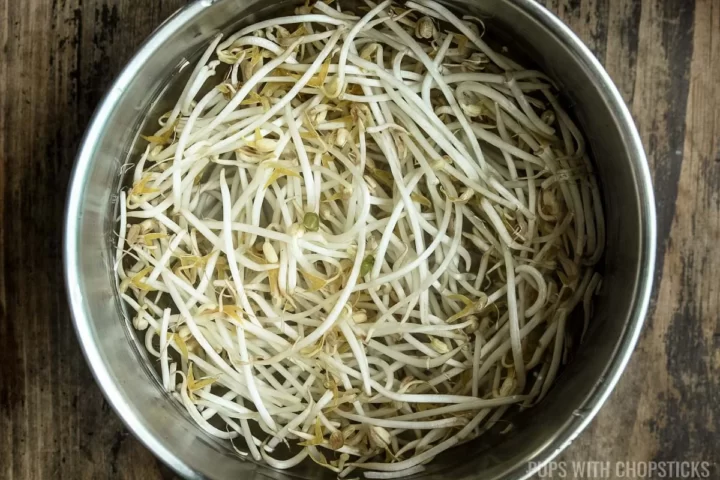
- Cut some lime wedges and set it aside for the very end.
- (Optional) If you are using crushed peanuts, toast some peanuts in a small pan on medium- low heat for a few minutes until golden brown. Make sure to watch it and keep it moving every 15 seconds so they don't burn.Once they are toasted, wait for them to cool and crush them in a mortar and pestle or finely chop it with a knife and set it aside for the end.
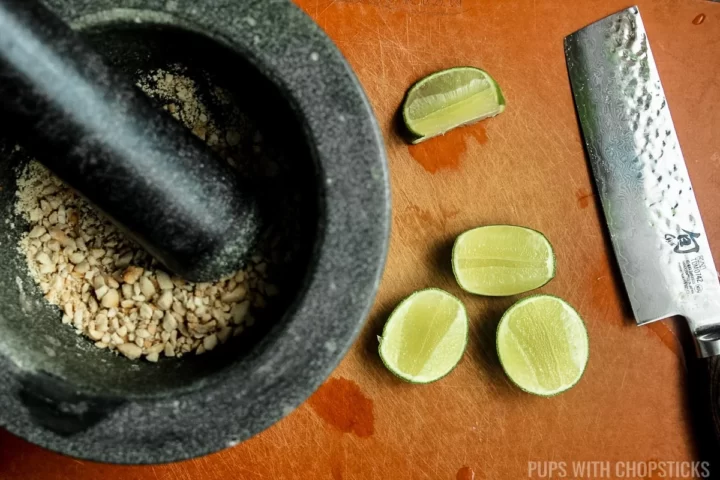
Stir Fry Everything Together
- Heat a non-stick pan or wok over medium-high heat and add oil. Once the pan is hot, add proteins like chicken, shrimp, or tofu in and stir-fry them until the protein is cooked through. Remove it from the pan and set it aside.
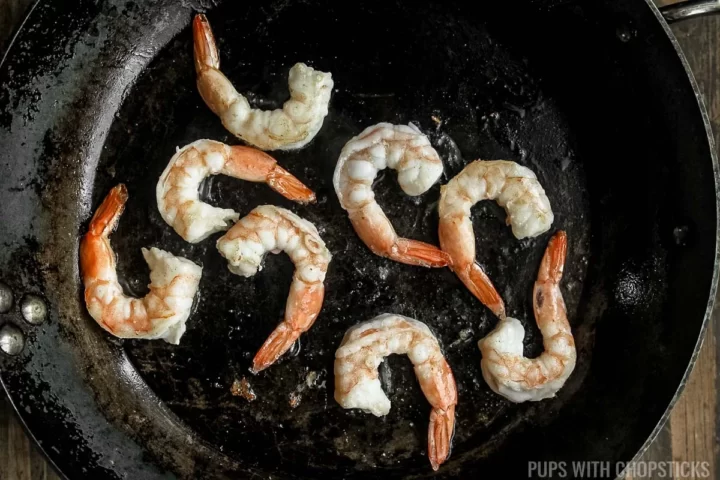
- Add a bit more oil into the pan. Once the pan is hot, add in the shallots and stir fry it until they are soft.Once the shallots are soft, then add in the minced garlic and stir them together for a few seconds.
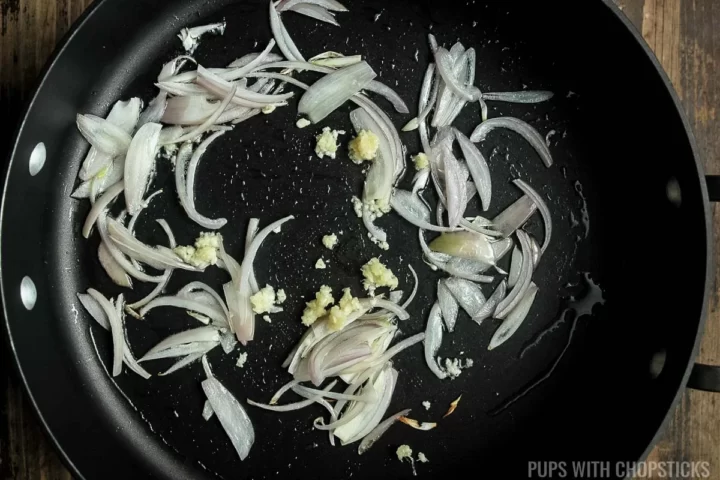
- Add the noodles into the pan and drizzle a bit of oil over it and flip it around.
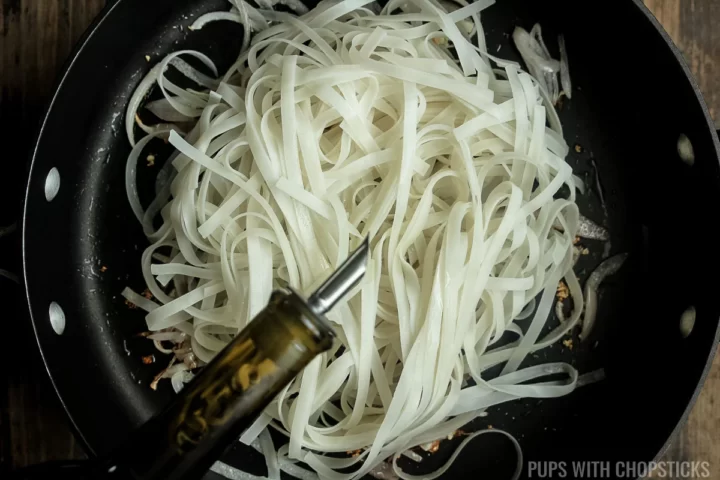
- Pour the pad thai sauce over the noodles.
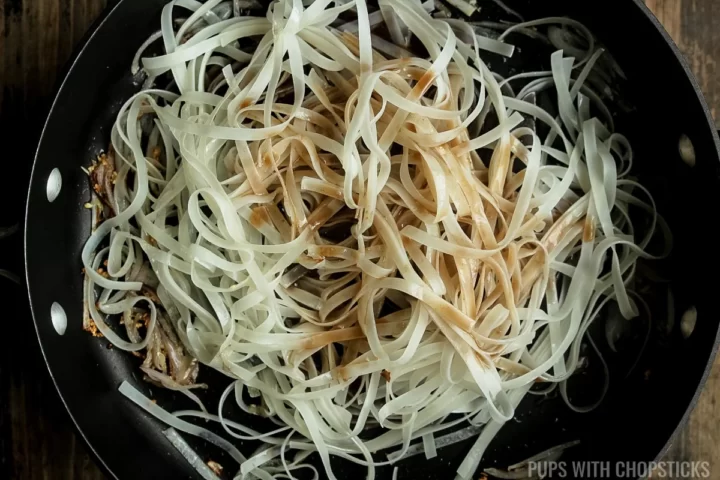
- Continue to stir-fry the noodles for a few minutes until they absorb the sauce, making sure to coat each strand evenly. If the noodles are too dry, add a few more tablespoons of water.
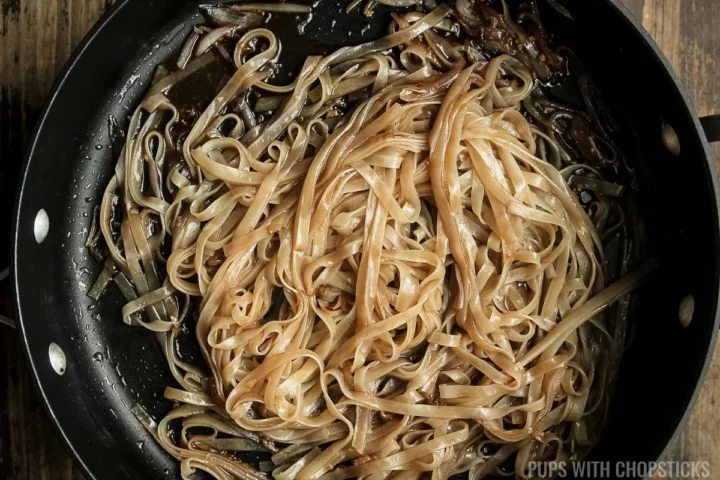
- Now it's time to add the eggs to the pan.Move the noodles to one side of the pan. Add a bit more oil to the pan, and crack the eggs into the pan on the other side. Break the yolks and gently move them around and let the eggs cook until set, then scramble them into the noodles.
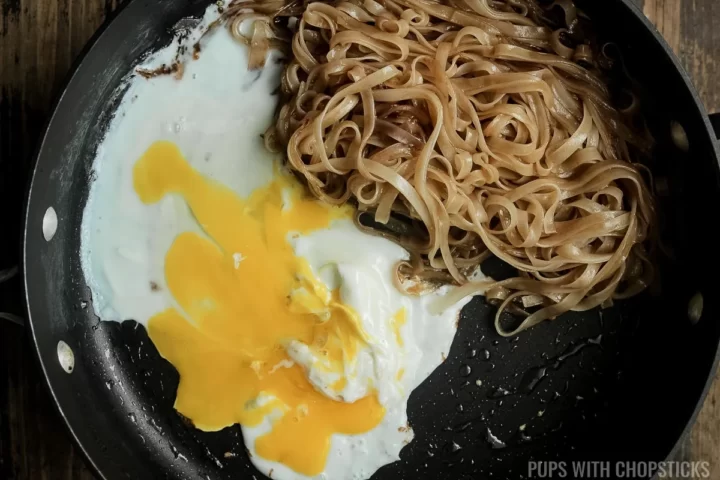
- Turn off the heat, and add the bean sprouts and scallions/garlic chives to the pan. Toss them with the noodles and scrambled eggs, allowing the residual heat to soften them slightly.
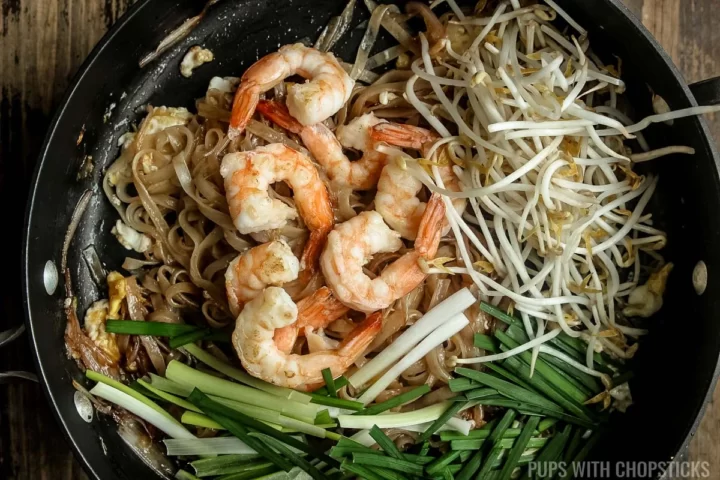
- Place it on a serving dish and sprinkle some toasted peanuts on top and serve it with a wedge of lime! Enjoy!
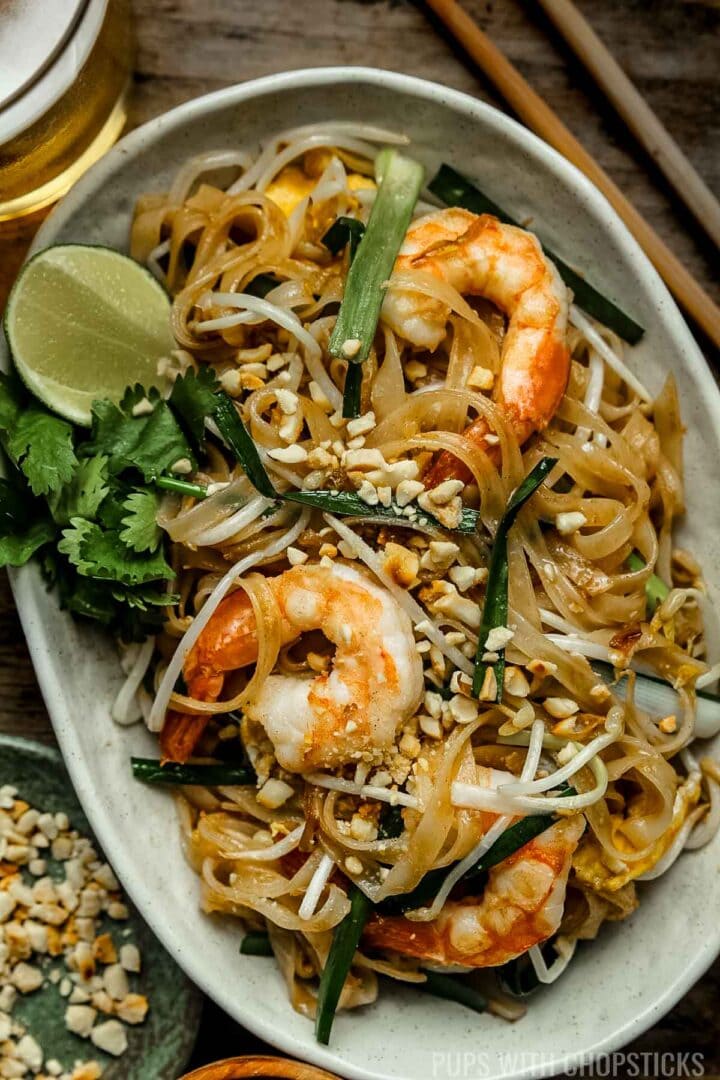
Notes
- If you cannot find tamarind concentrate, you can make your own tamarind concentrate by soaking ⅓ cup of tamarind pulp (break it up into small pieces first) with ½ cup of boiling water for about 20 minutes. Mash the pulp with the water and strain out the seed pods (making sure to push the pulp through the strainer with a spoon and scrape the bottom of the strainer for the extra pulp.) Measure out and use the tamarind paste as needed for the recipe. (There will be extra)
- To make it more authentic, you can also add finely chopped dried shrimp or salted pickles for a more salty flavor, but you will need to use less fish sauce so that it's not overly salty.
- If you want to make it spicy, you can add 2 tablespoons of sriracha to the sauce
- Don't Overcrowd Your Pan - When you overcrowd your pan, the sauce doesn't get distributed evenly, and the noodles don't cook evenly as well. You will also need space to push aside the noodles before you add the scrambled egg to the pan. Use a large frying pan, but if you have a small one, split everything in half and do it twice.
- Never Par-Boil Your Noodles - The best part about pad thai is the chewy, flavorful noodles. You never want to par-boil your noodles because it will make them mushy when you stir fry them because you are essentially cooking them twice. For the chewiest pad thai noodles, you only need to soak the rice noodle sticks.
- Don't Use Boiling Water to Soak Your Rice Noodles - Rice noodles are very quick to cook and delicate, and soaking them in boiling water will overcook it. I like to use hot tap water instead to insure they don't overcook while they are soaking. To test if the noodles are at the right consistency, do a finger wrap test after it has soaked for about 15 minutes. Wrap a noodle around your finger, if it breaks - you need to soak it longer, if it wraps easily, it's good to go.
- Don't Overcook Your Bean Sprouts - One of the best things about pad thai is that the textures and fresh bean sprouts give the dish a crisp texture and a fresh flavor. Bean sprouts can be easily overcooked (which can also make your noodles waterlogged). Turn off the heat before mixing the bean sprouts in, you only need the residual heat from the noodles to wilt it enough for the best texture.
- Try to Use the Exact Measurement of Noodles and Sauce for the Best Flavor - For the best sauce-to-noodle ratio, it's very important not to use more noodles than this recipe calls for because it will throw off the balance of the amount of sauce the noodles need to absorb to get that strong delicious flavors. If there are more noodles than sauce, there won't be enough liquid for the noodles to absorb, which will make the noodles dry and flavorless.
Nutrition
Calories: 612kcal | Carbohydrates: 120g | Protein: 21g | Fat: 6g | Saturated Fat: 2g | Polyunsaturated Fat: 1g | Monounsaturated Fat: 2g | Trans Fat: 0.03g | Cholesterol: 249mg | Sodium: 2890mg | Potassium: 581mg | Fiber: 5g | Sugar: 37g | Vitamin A: 512IU | Vitamin C: 16mg | Calcium: 132mg | Iron: 4mg
